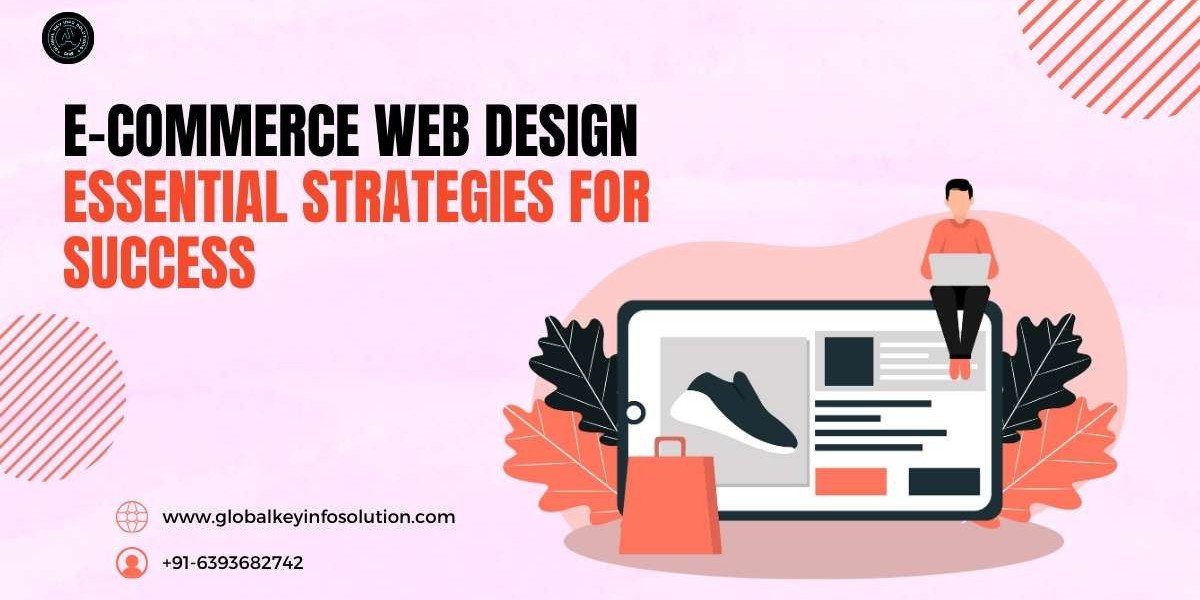Why E-commerce Web Design Matters
E-commerce Web Design is more than just aesthetics. A well-designed e-commerce website combines functionality, usability, and a seamless user experience (UX) to maximize engagement and sales. The design directly influences how users interact with your site, how easily they navigate through products, and how likely they are to complete a purchase.
Key factors to consider in e-commerce web design include:
User Experience (UX): A smooth, intuitive experience encourages users to stay longer and explore more.
Mobile Optimization: With mobile commerce on the rise, responsive design is critical for capturing the mobile shopper.
Loading Speed: Websites that load quickly lead to lower bounce rates and improved user satisfaction.
Visual Appeal: High-quality images, clean layouts, and a consistent theme foster trust and professionalism.
Call-to-Action (CTA): Strategically placed CTAs encourage users to take the next step in their buying journey.

Key Elements of an Effective E-commerce Web Design
1. User-Centric Navigation
The primary goal of navigation is to guide users effortlessly through the purchasing process. E-commerce websites with complex or confusing menus often drive users away. Simple, intuitive navigation ensures that customers can find what they’re looking for without frustration.
Category Organization: Organize products into clear categories and subcategories. Use filters and sorting options to help users narrow down their choices.
Search Functionality: A prominent search bar with auto-suggestions can significantly improve user experience.
Breadcrumbs: Breadcrumbs help users navigate back to previous pages without losing their place.

2. Mobile-Responsive Design
With an increasing number of consumers shopping via smartphones, having a mobile-responsive e-commerce website is non-negotiable. Mobile-first design prioritizes mobile users by ensuring your website performs seamlessly on all devices, from desktops to smartphones.
A responsive design adjusts content to fit varying screen sizes, maintaining functionality and aesthetics. It ensures that images, text, and navigation elements resize correctly for smaller screens, resulting in a positive mobile user experience.

3. High-Quality Product Pages
Product pages are the heart of your e-commerce website. To convert visitors into customers, product pages must be clear, detailed, and persuasive. Each product page should include:
Detailed Descriptions: Provide comprehensive, easy-to-read descriptions of each product, including size, color, material, and features.
High-Resolution Images: Offer multiple high-quality images of each product from various angles. Include zoom functionality for a closer look.
Product Reviews: Customer reviews build credibility and trust. Display ratings and testimonials prominently on product pages.
4. Simplified Checkout Process
A lengthy, complicated checkout process is one of the leading causes of cart abandonment. To reduce friction and increase conversions, streamline the checkout process by:
Guest Checkout Option: Allow customers to check out without creating an account to reduce barriers to purchase.
Multiple Payment Options: Offer a variety of payment methods, such as credit cards, PayPal, and digital wallets.
Clear Shipping Information: Display shipping costs and estimated delivery times before customers enter payment details.

5. SEO Optimization
SEO (Search Engine Optimization) is essential for driving organic traffic to your e-commerce website. Optimizing your website design for SEO improves its visibility on search engines and increases the likelihood of attracting potential customers.
Key SEO elements to implement in your e-commerce website design include:
Meta Tags and Descriptions: Ensure each page has optimized meta titles and descriptions with relevant keywords.
Image Alt Text: Add alt text to all images to improve visibility in image search results and enhance accessibility.
SEO-Friendly URL Structure: Use clean, descriptive URLs that include target keywords for product pages.

6. Trust-Building Elements
Consumers need to feel confident that their personal and financial information is secure. To build trust, your website should include:
SSL Encryption: Secure your website with SSL certificates to encrypt user data and improve trust.
Trust Badges: Display security badges, payment provider logos, and any industry certifications to reassure customers.
Return and Refund Policy: Clearly state your return and refund policies, which enhances customer confidence in making a purchase.

7. Performance and Speed Optimization
Website speed is a crucial factor in both user experience and SEO rankings. Slow-loading pages can lead to high bounce rates, reduced conversions, and poor search rankings. To improve site performance, consider the following:
Optimize Images: Compress large images without compromising quality to reduce load times.
Minimize HTTP Requests: Limit the number of elements on your pages to reduce server requests.
Content Delivery Network (CDN): Use a CDN to deliver content faster by caching it on servers closer to users.

8. Analytics and Conversion Tracking
To continuously improve your e-commerce web design, integrate analytics and tracking tools such as Google Analytics and heatmaps. These tools provide valuable insights into user behavior, allowing you to make data-driven decisions and optimize your site for better performance.
Suggested Diagram: Conversion Funnel
mermaid
CopyEdit
graph LR
A[Visitor Arrives on Website] --> B[Browses Products]
B --> C[Adds Products to Cart]
C --> D[Proceeds to Checkout]
D --> E[Completes Purchase]
![]()
9. Security and Compliance
Data security is a top priority for any e-commerce business. Ensure your website complies with all relevant regulations, such as GDPR and PCI DSS. Regular security audits and software updates help protect sensitive customer data.

10. Engaging Content and Branding
Your e-commerce website should reflect your brand’s voice and values. Use engaging content, such as blogs, product videos, and customer stories, to connect with your audience on a deeper level. Consistent branding across the website reinforces brand identity and builds long-term customer loyalty.
Conclusion
In today’s competitive e-commerce landscape, Website Development plays a pivotal role in your business’s success. By focusing on user experience, mobile responsiveness, SEO, and performance, you can create a seamless and attractive online shopping experience that leads to higher conversion rates and increased sales. Always prioritize your customers’ needs and preferences, and regularly update your website to stay ahead of trends and ensure optimal performance. Investing in a well-designed e-commerce website is a step toward long-term business growth.









